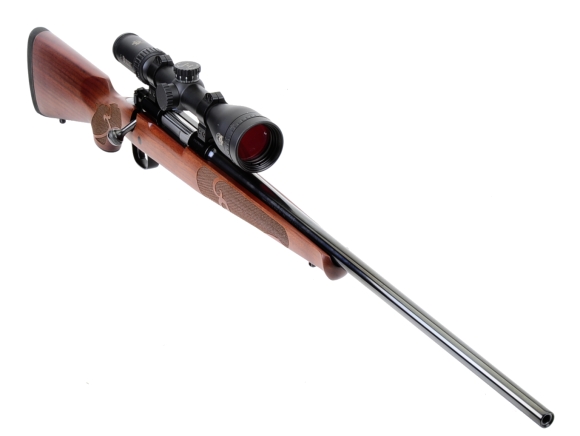
|
Winchester Model 70 Featherweight |
|
| Manufactured | Browning – Portugal |
| Item# | 535200227 |
| Type | Bolt Action |
| Caliber | 280 Remington |
| Capacity | 5+1 |
| Barrel Length | 22″ |
| Rifling | 1:10 RH |
| Weight | 7 Lbs 0 Oz |
| Overall Length | 42 3/4″ |
| Stock | Grade I Black Walnut |
| Barreled Action | Matte Blue Steel |
| Length of Pull | 13 3/4″ |
| Drop at comb | 1/2″ |
| Drop at heel* | 3/4 “ |
| Sights | Clean |
| Scope | Drilled and Tapped |
| Trigger Pull | 4 Lbs. 7 Oz. Adj |
| Safety | Wing Three Position |
| U.S. MSRP | $1009.99 |
The Winchester Model 70 Featherweight has been covered, in detail, numerous times on Real Guns®. Introduced in 1952 as a more compact, 2″ shorter barrel and one pound lighter version of the 1936 standard Winchester Model 70.
The Featherweight has evolved over the years with the standard Model 70, but all evolutionary and not breaking the basic tenets of the design; modest stock re-contouring, some changes in raw materials and process. But in the main, it is the same gun right to the Schnabel on the at the forend.
Chambers change with trends and popularity. Currently, the following calibers are offered: 22-250 Rem, 243 Win, 6.5 Creedmoor, 7mm-08 Rem, 308 Win, 25-06 Rem, 270 Win, 280 Rem, 30-06 Springfield, 264 Win Mag, 300 Win Mag, 300 WSM, 270 WSM, 325 WSM. 7mm Rem Mag, replaces the 280 Rem in the stainless version. Magnum versions with 24″ barrels, all others 22″ barrels.
In addition to this traditional Winchester Model 70 Featherweight, there are a number of other versions offered: Featherweight Compact and Featherweight Stainless with the occasional specials like the Featherweight High Grade Maple and Featherweight High Grade Dark maple Stainless. Functionally the same, different appearances and maybe slight differences in required maintenance and resistance to the elements.
And what about the current Featherweight?
The Winchester Model 70 Action is flat bottomed and locates to the stock at the front integral recoil lug and at the rear of the receiver at the tang. The stock is glass bedded at those two points, the barrel floats in the channel. In days past, the stock had a pressure bump at the forend to further support the barrel, but that approach tends to scatter shots and diminish accuracy.
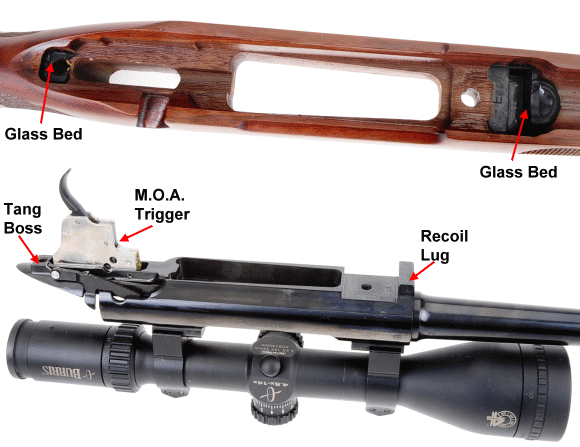
The Winchester Model 70 Featherweight features the company’s proprietary M.O.A. trigger. By increasing the trigger’s mechanical advantage, preloading to eliminate creep and by controlling overtravel, the new trigger has a short, crisp and light pull and is fully adjustable. However, the once small window in the magazine well that permitted customer customer adjustment without removing stock has been closed and the work of a glue stick gunner can be found on the trigger adjusting screws. I don’t blame Winchester, we live in a different world today… metaphorically speaking.
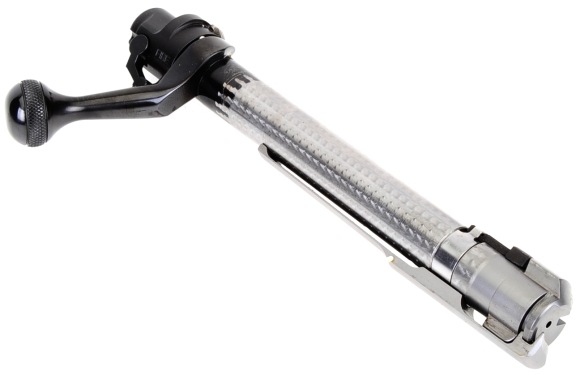
The action is controlled round feed with pre ’64 type full claw extractor. The one piece bolt body is jeweled, the bolt handle tucks out of the way for scope eyepiece clearance and knurled at the bolt knob for traction.

The three positive position wing safety: fire, safe with bolt unlocked, safe with bolt locked in battery is handy for a hunter and can easily be operated with gloved hands. Metal finish is uniform on all exposed and covered surfaces. The beat up Burris scope and Warne mounts are mine and they have seen a good deal of use.
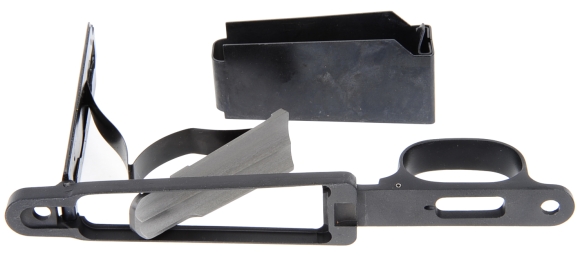
The bottom metal is a combination of things. The magazine box is steel, are are the floorplate, flat spring and latch components. The one piece trigger guard and floorplate frame is anodized aluminum, as is the follower. All nicely finished.

The stock has a nice, non-reflective satin finish. Checkering patters are classic Featherweight with well done machine cut checkering, Sling swivel studs are standard, as is the Decelerator recoil pad. The walnut stock on the subject gun has straight grain for stability, but also good color and contrast for a quality look.
The rifle’s workmanship is excellent throughout and the action’s operation is slick. The trigger is exceptional, balance is very good and the stock geometry is optimal for any useful field shooting positions… even if my knees aren’t.
The 280 Remington… as it applies to the Model 70 Featherweight
 For some reason, the 280 Remington cartridge premiered in Remington’s Model 740 autoloader; not a rifle known for longer range accuracy. Unrepentant, the next firearm chambered for the round was the Remington Model 760 pump action… also not renowned for long range accuracy. The round finally found its way into the Model 721 and 725, 1960 through 1961, then into the Model 700 in 1962.
For some reason, the 280 Remington cartridge premiered in Remington’s Model 740 autoloader; not a rifle known for longer range accuracy. Unrepentant, the next firearm chambered for the round was the Remington Model 760 pump action… also not renowned for long range accuracy. The round finally found its way into the Model 721 and 725, 1960 through 1961, then into the Model 700 in 1962.
Head scratching over why the cartridge wasn’t a barn burner in sales, Remington concluded it must be the name, so the 280 Remington was rechristened the 7mm Express and sold under that name between 1979 and 1980. Just long enough to confuse the crap out of everyone before changing back and allowing the market to enjoy the cartridge for its performance, rather than snazzy name. Yes, I did use the word snazzy. In fact, I might even go for nifty.
The 280 Remington offers: a bigger bore than the 270 Winchester, greater bullet weights, higher sectional density and a higher ballistic coefficient. Combined, this allows the 280 Remington’s bullets in the mid and upper range to hold onto velocity, shorten time in flight and go farther, flatter.
From a good family…
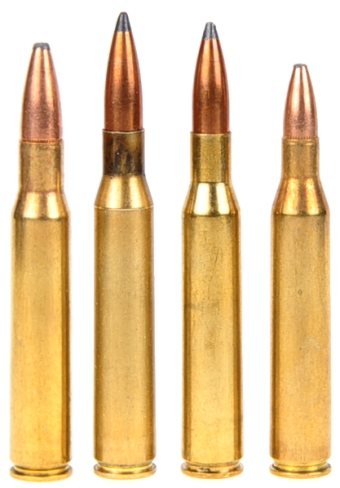
(L-R) The parent in this line up is the 30-06 Springfield, a cartridge adopted by the U.S. military in 1906. The 1957 280 Remington was made by necking down the 30-06 Springfield case to accept an 0.284″ bullet and moving its shoulders forward by 0.051″. The 270 Winchester was Winchester’s hot rod of 1925, made by necking down the 30-06 Springfield to accept a then unique 0.277″ bullet. The 1969 25-06 Remington has wildcat roots that date back to 1920 and its originator A.O. Neidner. It is made by necking down the 30-06 Springfield to accept a 0.257″ bullet.
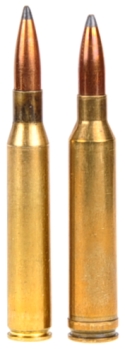 The 280 Remington, while a solid performer, is not a 7mm Remington Magnum and neither is the 280 Ackley Improved, although there is not a major separation.
The 280 Remington, while a solid performer, is not a 7mm Remington Magnum and neither is the 280 Ackley Improved, although there is not a major separation.
| Cartridge | Bullet Weight Grains |
Case Capacity H2O |
SAAMI MAP PSI |
SAAMI MV FPS |
Factory Ammo FPS |
| 280 Remington | 140 | 67 | 60000 |
2985 | 3090 |
| 280 Ackley Improved | 140 | 74 | 65000 |
3260 | 3150 |
| 7mm Remington Mag | 140 | 82 | 61000 |
3086 | 3240 |
SAAMI standards for all three cartridges are based on a common 24″ test barrel. The 280 Remington requires the least amount of propellant, it has the lowest Maximum Average Pressure and it delivers quite respectable performance. By SAAMI standard pressure and SAAMI standard velocity as petitioned, the Ackley has greater capacity than the 280 Remington and operates at a pressure level 5000 psi, 8.3% higher. The AI falls short in capacity to the 7mm Remington Magnum, but increases Maximum Average Pressure by 4000 psi or 6.5%.
The numbers as standards don’t mean a whole lot, other than points of reference. All of them could run at the same pressures in good bolt action rifles as the SAAMI standard takes into consideration the range of firearms for which they were intended. As an example, while the 280 Remington could operate at the same pressure as the AI in a good bolt action rifle, when it was submitted to SAAMI for homologation, it was intended for use in an autoloader and pump action rifle.
Concludendo parole

The Winchester Model 70 Featherweight does well in representing the brand’s history and Oliver Winchester’s legacy. In fact, FN Herstal, the company that produces both Winchester and Browning firearms has been a quality steward. The 280 Remington cartridge has a long, solid fifty plus year history in North American hunting. In Part II, we will put together some favorite handloads and wring out the combination in live fire.

Email Notification